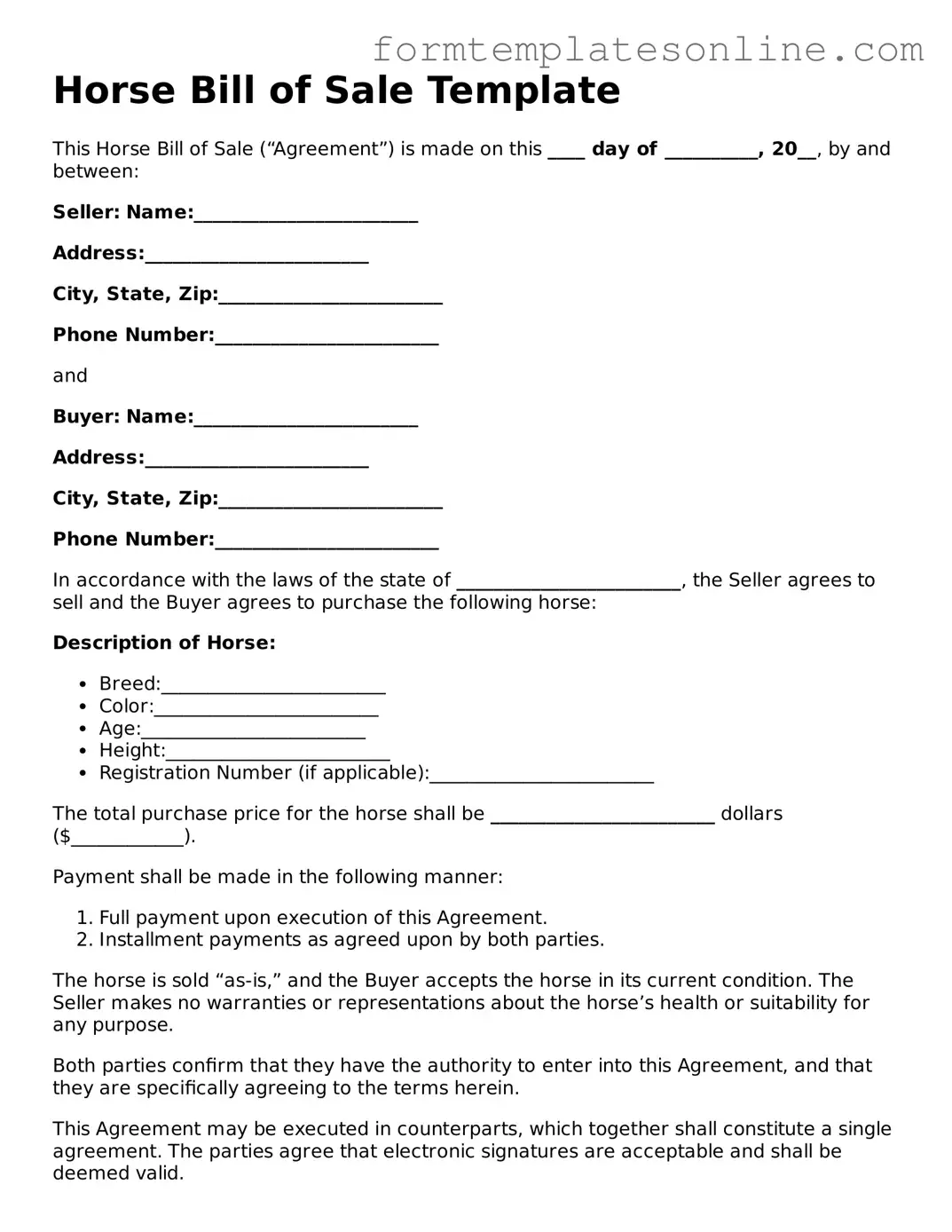Horse Bill of Sale Template
This Horse Bill of Sale (“Agreement”) is made on this ____ day of __________, 20__, by and between:
Seller: Name:________________________
Address:________________________
City, State, Zip:________________________
Phone Number:________________________
and
Buyer: Name:________________________
Address:________________________
City, State, Zip:________________________
Phone Number:________________________
In accordance with the laws of the state of ________________________, the Seller agrees to sell and the Buyer agrees to purchase the following horse:
Description of Horse:
- Breed:________________________
- Color:________________________
- Age:________________________
- Height:________________________
- Registration Number (if applicable):________________________
The total purchase price for the horse shall be ________________________ dollars ($____________).
Payment shall be made in the following manner:
- Full payment upon execution of this Agreement.
- Installment payments as agreed upon by both parties.
The horse is sold “as-is,” and the Buyer accepts the horse in its current condition. The Seller makes no warranties or representations about the horse’s health or suitability for any purpose.
Both parties confirm that they have the authority to enter into this Agreement, and that they are specifically agreeing to the terms herein.
This Agreement may be executed in counterparts, which together shall constitute a single agreement. The parties agree that electronic signatures are acceptable and shall be deemed valid.
IN WITNESS WHEREOF, the parties have executed this Horse Bill of Sale as of the date first written above.
Seller's Signature:________________________
Date:________________________
Buyer's Signature:________________________
Date:________________________
